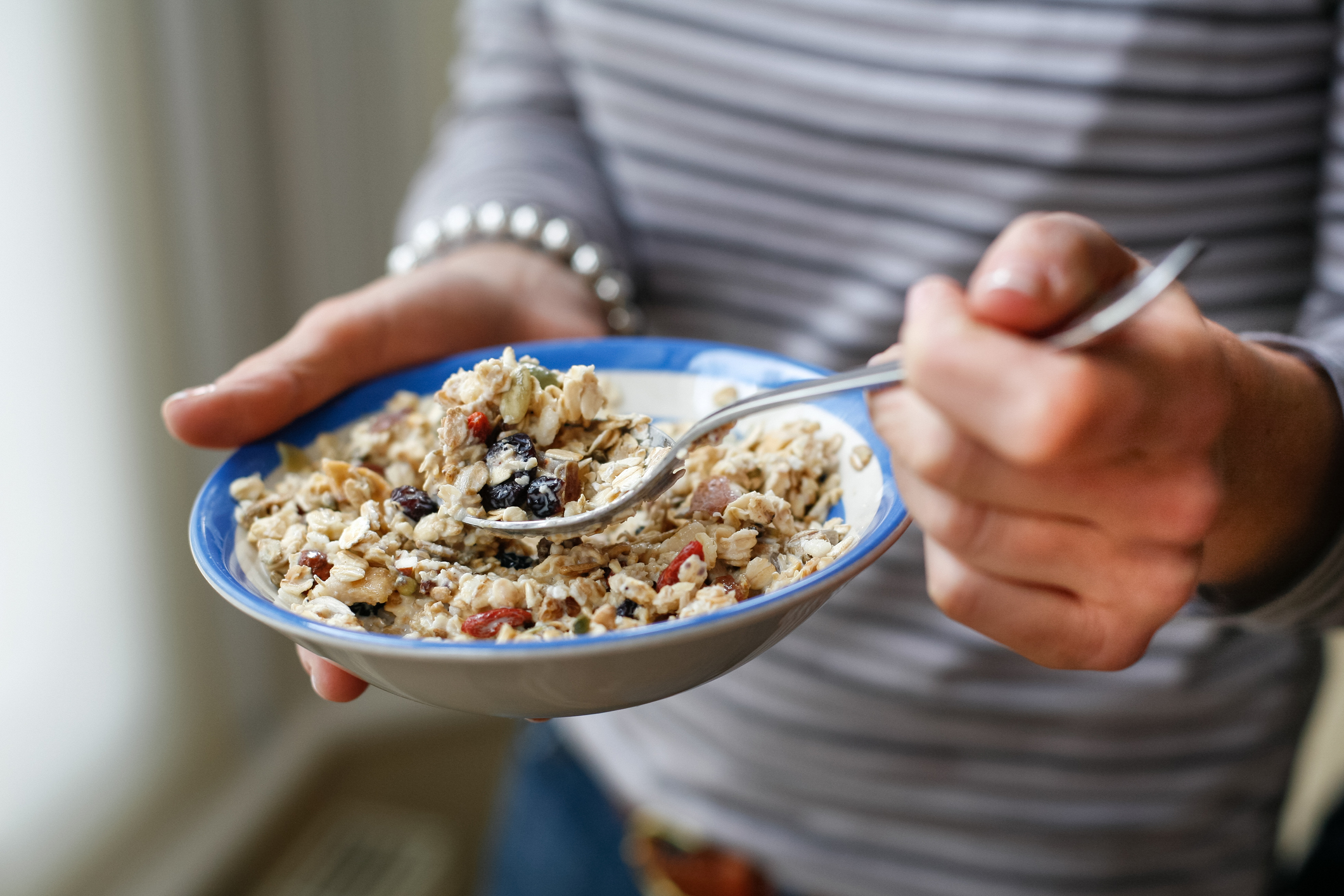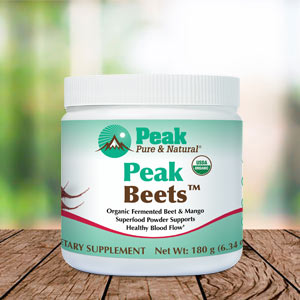Get Easy Health Digest™ in your inbox and don’t miss a thing when you subscribe today. Plus, get the free bonus report, Mother Nature’s Tips, Tricks and Remedies for Cholesterol, Blood Pressure & Blood Sugar as my way of saying welcome to the community!
5 ways oatmeal can beat back metabolic syndrome

Oatmeal isn’t just for breakfast or cold winter days. You can enjoy this amazingly healthy meal even in the heat of the summer. If you need something filling to keep you going for a few hours, you can’t go wrong with oatmeal, that’s for sure.
But it’s so much more than that…
Oatmeal can help you beat back metabolic syndrome.
Metabolic syndrome is a nasty health condition that just seems to sneak up on people. It might just start with your cholesterol numbers. Then before you know it, your blood pressure goes up. Next thing you know your doctor is concerned about your blood sugar — which is going up along with your weight.
Because it’s not a single disease, but a combination of several conditions you’ll see listed below, it’s often difficult to diagnose until it has already taken hold in the body, done some damage and placed those with it at an elevated risk of developing heart disease, diabetes and suffering a deadly stroke.
Before you wake up one day to find you’re on more medications than you’ve ever taken in all your years, why not try a daily bowl of oatmeal instead?
5 top health benefits of oatmeal, according to science
I know I’d rather enjoy a warm comforting bowl of oatmeal than take a fistful of medicine any day. But can oatmeal really help keep the conditions at bay that lead metabolic syndrome — and worse? The research says oats help…
- Promote lower blood pressure. Whole oats are high in antioxidants and beneficial plant compounds called polyphenols. Most notable is a unique group of antioxidants called avenanthramides, which are almost solely found in oats. Avenanthramides may help lower blood pressure levels by increasing the production of nitric oxide, a gas molecule that helps dilate blood vessels and leads to better blood flow.
- Promote weight loss. Oats are high in a type of soluble fiber known as beta-glucan. Because beta-glucan is a soluble fiber, it swells — hence that fullness you feel after eating it — which creates a sense of satiety and helps you say no to overeating. When it swells it becomes a sort of thick gel that goes on to provide other healthful benefits…
- Promote better blood sugar. The beta-glucan gel delays the emptying of the stomach and slows the absorption of glucose into the blood.
- Promote lower cholesterol. This same gel lowers the amount of cholesterol absorbed from food in the intestines. Beta-glucans also have a prebiotic effect as well, which changes the gut microbiota composition and increases the production of short‐chain fatty acids which are helpful at lowering cholesterol.
- And everyone knows oat bran can help keep you regular. In one study among residents of a geriatric hospital, 59 percent of those who ate 7-8g of oat bran daily for 12 weeks were able to discontinue the use of laxatives.
Oatmeal is incredibly nutritious
In addition to helping beat back all of those conditions that lead to metabolic syndrome, oats are one of the most nutrient-dense foods you can eat.
Nutrient-dense foods are foods that provide a lot of nutrients (fiber, phytochemicals, vitamins, minerals, etc.) for a low number of calories. Oats are among the most nutrient-dense foods you can eat.
A food’s Reference Daily Intake (RDI) percentage is the daily intake level of a nutrient that is considered to be sufficient to meet the requirements of 97–98 percent of healthy individuals in every demographic in the United States.
Half a cup of dry oats contains:
- Manganese: 191 percent of the RDI
- Phosphorus: 41 percent of the RDI
- Magnesium: 34 percent of the RDI
- Copper: 24 percent of the RDI
- Iron: 20 percent of the RDI
- Zinc: 20 percent of the RDI
- Folate: 11 percent of the RDI
- Vitamin B1 (thiamin): 39 percent of the RDI
- Vitamin B5 (pantothenic acid): 10 percent of the RDI
- Smaller amounts of calcium, potassium, vitamin B6 (pyridoxine) and vitamin B3 (niacin)
You’re also getting 51 grams of carbs, 13 grams of protein, 5 grams of fat and 8 grams of fiber, but only 303 calories.
8 ways to jazz up your oatmeal
Oatmeal can seem bland, but that makes it the perfect “backdrop” for all sorts of toppings and add-ins:
- Fresh fruit, nuts, seeds, apples, bananas, berries, or peaches with chopped walnuts or sunflower seeds for crunch. Add a little cinnamon, and you’re there!
- Crumbled bacon and maple syrup
- Pumpkin puree, allspice, cinnamon, ginger, nutmeg and pumpkin seeds
- Coconut milk and shredded coconut
- Sugar-free jam
- Grated cheese (makes a hearty breakfast, lunch or even dinner!)
- Greek yogurt (the tang counteracts the blandness of oatmeal)
- Raisins or any other chopped dried fruits, including dates, apricots or dried apples
Editor’s note: There are perfectly safe and natural ways to decrease your risk of blood clots including the 25-cent vitamin, the nutrient that acts as a natural blood thinner and the powerful herb that helps clear plaque. To discover these and other secrets of long-lived hearts, click here for Hushed Up Natural Heart Cures and Common Misconceptions of Popular Heart Treatments!
Sources:
- Is Oatmeal Healthy? Here’s What the Experts Say — Time.com
- Avenanthramide, a polyphenol from oats, inhibits vascular smooth muscle cell proliferation and enhances nitric oxide production — PubMed
- Cholesterol-lowering effects of oat β-glucan: a meta-analysis of randomized controlled trials
- Depression of the glycemic index by high levels of beta-glucan fiber in two functional foods tested in type 2 diabetes — PubMed
- Use of fiber instead of laxative treatment in a geriatric hospital to improve the wellbeing of seniors — PubMed
- 9 Health Benefits of Eating Oats and Oatmeal — Healthline













